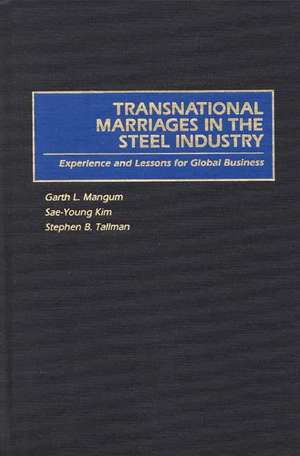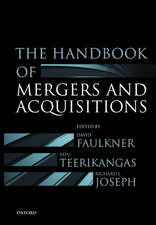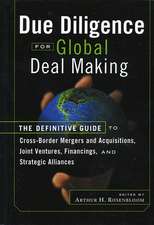Transnational Marriages in the Steel Industry: Experience and Lessons For Global Business
Autor Sae-Young Kim, Garth Mangum, Stephen B. Tallmanen Limba Engleză Hardback – 6 mai 1996 – vârsta până la 17 ani
Preț: 437.24 lei
Preț vechi: 603.90 lei
-28% Nou
Puncte Express: 656
Preț estimativ în valută:
83.73€ • 86.27$ • 70.26£
83.73€ • 86.27$ • 70.26£
Carte tipărită la comandă
Livrare economică 21 februarie-07 martie
Preluare comenzi: 021 569.72.76
Specificații
ISBN-13: 9781567200409
ISBN-10: 1567200400
Pagini: 216
Dimensiuni: 156 x 235 x 16 mm
Greutate: 0.49 kg
Ediția:New.
Editura: Bloomsbury Publishing
Colecția Praeger
Locul publicării:New York, United States
ISBN-10: 1567200400
Pagini: 216
Dimensiuni: 156 x 235 x 16 mm
Greutate: 0.49 kg
Ediția:New.
Editura: Bloomsbury Publishing
Colecția Praeger
Locul publicării:New York, United States
Notă biografică
GARTH L. MANGUM is Max McGraw Professor of Economics and Management at the David Eccles School of Business, University of Utah. A former steelworker and steel industry arbitrator, with doctorates in both economics and law, he is author of more than 50 books and monographs and numerous scholarly articles. He has been an economic adviser in more than 30 countries and has served in legislative and executive positions in the U.S. government during the course of two administrations and in an advisory capacity in five others.SAE-YOUNG KIM is Associate Professor and Chairman of the Department of International Trade at the Dankook University, Seoul, Korea. He holds a doctorate in economics and among other positions serves on the Board of Directors of the Korean Development Bank and as a consultant to Pohang Steel Company, Korea.STEPHEN B. TALLMAN is Associate Professor of Management at the David Eccles School of Business, University of Utah. He received his doctorate in management from UCLA and is author of numerous articles, conference papers, research projects and presentations. He is also an editorial board member and a reviewer for various academic journals in international business.
Cuprins
The Emergence of International Joint VenturesThe International Joint Venture from a Theoretical PerspectiveSteel Industry Challenges of the 1980sSteel Industry Joint Venture ResponsesSteel Case Studies: Three Integrated MillsSteel Case Studies: Three Finishing MillsLessons from Steel Industry Joint VenturesTheoretical ImplicationsConclusionsReferencesIndex













